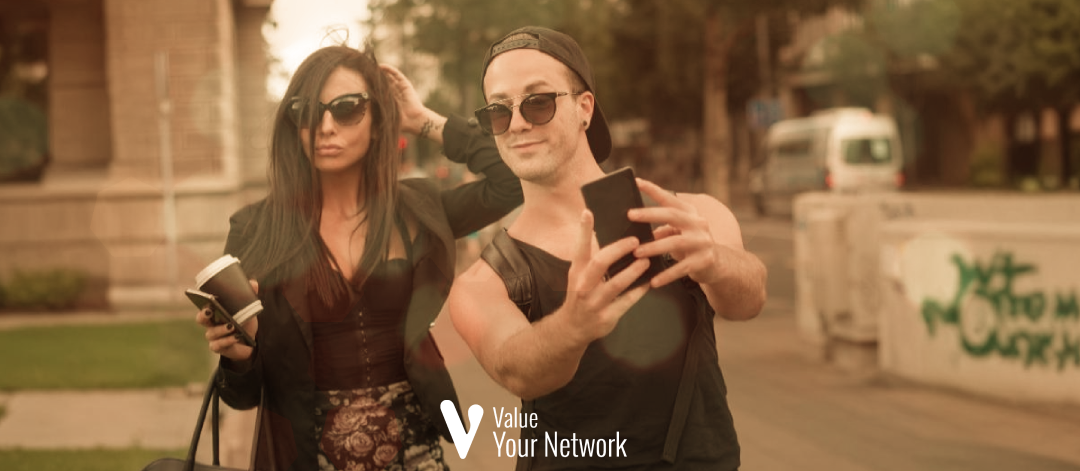Fake influencers are invading social networks! Find out how to spot them and avoid their pitfalls to protect your investments in influencer marketing.
In the world of influencer marketing, brands seek to maximize their visibility and build strong relationships with their audiences. But a worrying phenomenon is gaining momentum: fake influencersBehind thousands of followers and seemingly engaging interactions, there are often artificially inflated statistics. These imposters use fraudulent techniques to attract brands seeking partnerships. How can you identify them? What are the dangers of working with them? How can you protect your marketing budget? Let’s decipher this deceptive universe together.
What is fake influence?
The term fake influence refers to all fraudulent practices used by certain influencers to artificially inflate their popularity and engagement rates. These techniques include :
| Common fake influence practices | Objective |
|---|---|
| Buying followers | Artificially increase their community |
| Buy likes, comments and shares | Simulate strong commitment |
| Use of bots | Automate unnatural interactions |
| Pod Membership | Exchange interactions between influencers |
These deceptive practices give the illusion of a massive and engaged audience, but they actually hide a total lack of real impact on brand campaigns.
The risks of working with fake influencers
Partner with a fake influencer represents a major risk for a brand. Far from strengthening its visibility, this collaboration can generate financial losses and tarnish its reputation.
| Main risks | Explanations |
|---|---|
| Financial loss | Money invested in a campaign with a fake influencer is wasted because their audience is not real. |
| Lack of return on investment | Purchased followers are not real potential consumers, which reduces the effectiveness of the campaign. |
| Negative impact on brand image | Being associated with a fraudulent influencer can harm the credibility of the company. |
| Falling consumer confidence | If customers realize that a brand is collaborating with a questionable influencer, their perception may become negative. |
It is therefore essential to check the reliability of influencers before entering into a partnership.
How to detect a fake influencer?
Fortunately, there are several methods to identify a fake influencer before signing a contract.
🔎 1. Check the subscriber/engagement ratio
An influencer with 100,000 followers but only 200 likes and 10 comments per post is probably a fake. An engagement rate lower than 2% is often suspect.
🔎 2. Observe the evolution of the number of subscribers
A sudden spike of thousands of new subscribers in a few days for no apparent reason is often a sign of a buy followers.
🔎 3. Analyze the quality of interactions
Generic comments like “Nice post!” or “Cool pic!” are often generated by bots. A real audience leaves authentic and engaging comments.
🔎 4. Examine the origin of subscribers
If a French influencer has a majority of followers from India, Brazil, or Russia, but doesn't produce any content related to those countries, there's a good chance their followers will be bought.
Tools to spot fake influencers
To go further in the analysis, specialized tools in influence marketing allow to detect anomalies and assess the reliability of influencers:
| Tool | Main feature |
|---|---|
| HypeAuditor | Analyzes audience and detects purchased subscribers |
| Vscore of ValueYourNetwork | Gives an authenticity score to influencers |
| Stellar | Checks the quality of the engagement |
| Social Blade | Tracks the evolution of the number of subscribers |
Thanks to these platforms, it is possible to detect fraudulent behavior and avoid falling into the trap of fake influence.
How to manage fake influence in an influencer marketing agency?
Specialized agencies, such as ValueYourNetwork, play a key role in the fight against fake influence. They adopt rigorous strategies to protect their customers:
- In-depth influencer analysis : before any collaboration, the agency checks the credibility and authenticity of the profiles.
- Transparent contracts : specific clauses guarantee that the influencer's audience is real and that engagement is organic.
- Continuous performance monitoring : each campaign is analyzed in depth to detect possible anomalies.
Agencies must also educate their teams to recognize warning signs and use appropriate analysis tools.
Best practices to avoid the pitfalls of fake influence
If you are a brand looking to collaborate with influencers, here are some essential rules to be continued:
✔ Prioritize quality over quantity : A micro-influencer with 10,000 real followers can be more effective than a fake influencer with 500,000 followers. ✔ Analyze content consistency : an authentic influencer creates quality content that connects with their audience. ✔ Use verification tools : HypeAuditor, Favikon and Stellar are your allies to avoid fraud. ✔ Take the time to observe Follow an influencer over several weeks before concluding a partnership.
Influencer marketing still has a bright future
Fake influence is a real problem, but it must not tarnish the reputation of influencer marketing. By adopting rigorous verification methods and surrounding yourself with the right partnersIt's possible to run high-performance, profitable campaigns.
Brands need to remain vigilant and work with specialized agencies like ValueYourNetwork, which are committed to guaranteeing campaigns authentic and efficient.
➡ And you, have you ever encountered a fake influencer? Contact us for an in-depth analysis of influencer accounts!

